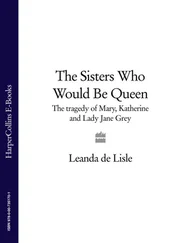Just after completing her final university examinations in 1963, Amiel opted for financial stability. ‘I wrote a message under the seal of your degree,’ she told Gary Smith, referring to a romantic gesture she had made while preparing the degree certificates in the university administrator’s office. ‘It’s a love message,’ she confided. Days later, at the end of a sexual session in Gary’s father’s car, she unexpectedly snapped, ‘Let’s get married.’ Gary understood the reasons. Barbara was fed up with sex in the back of a car. She wanted a bed, security and, above all, money. Their first date for the ceremony was abandoned. ‘We’ve got cold feet,’ Gary told his parents. A few weeks later they were married in a rabbi’s study in front of eight witnesses including her mother and Leonard Somes, Gary’s parents and Larry Zolf. At the party afterwards in the Smiths’ family apartment, Zolf pushed through gamblers, bookmakers and scam artists to ask a small man, ‘Are you Meyer Lansky?’ ‘So what if I am?’ he growled.
The newly married couple rented an apartment on Toronto’s Spadina Road, and while Gary Smith began his career as a lawyer, Amiel was employed as a secretary and script assistant in the television section of CBC. Not long afterwards, there was a terrible shock. Harry Smith, having lost all his money gambling, was arrested with his brother and accused of fraud. Soon after, he was convicted and imprisoned. Instead of joining a stable Jewish family, Amiel had associated herself with criminals. It was not long before she realised that her decision to marry Gary Smith had been short-sighted. Domestic life with the modest lawyer was dull compared to the thrills at CBC, especially following her appearance on the cover of Toronto Life magazine. Increasingly, she returned home late and too tired for sex. Just nine months after their marriage she asked her husband, ‘Do you know what I’m thinking?’ ‘I would not presume to know what’s going on in your head,’ replied Smith. ‘This isn’t working. I’m off.’
Late that night in summer 1964, George Jonas, a twenty-nine-year-old Hungarian émigré also employed by CBC, was driving along Spadina Road and spotted Amiel crossing the street, ‘weighed down with more baggage than a ten-hand army mule’. ‘Don’t tell me,’ said Jonas. ‘You just robbed a dwelling and can’t remember where you parked the getaway car.’ ‘Close,’ she replied. ‘I just split up with my husband.’ ‘Great,’ said Jonas. ‘Let’s go have coffee.’ ‘Can’t,’ said Amiel. ‘Have to unload all this stuff before seven. Call me tomorrow if you like.’ 15
Jonas, a right-wing intellectual, was an unusual character in Toronto. Alternately, he dressed in black leather and rode a motorcycle or assumed the mantle of a Central European, carrying a silver-headed cane as a prop to his hand-kissing and heel-clicking. In London or New York his act might have been ridiculed, but Amiel was attracted to the ambience of an East European intellectual’s home filled with books, music and passionate arguments. Since her visit to Helsinki she had moved from the far left towards the political centre, and Jonas’s fervent anti-Communism was appealing. For his part, Jonas said, ‘I found her very attractive and thoroughly unpleasant.’ 16 That was not a barrier to a relationship, and nor was Sylvie, Jonas’s wife. Jonas and Amiel began an affair, although Amiel did not regard it as an exclusive attachment. She was now better fed and dressed, making her breasts appear larger. ‘The bigger and more pronounced they are,’ she would later write, ‘the more attractive they are.’ Depending on her mood, she could appear flat-chested, while on other occasions the size of her breasts fuelled speculation about implants. ‘I’ve got one thing you haven’t got,’ she boasted to male journalists vying for the same interview: ‘cleavage.’ 17 Shamelessly, she would ask a colleague for advice about something she had written, and while he read her pages, rest a breast on his shoulder. As she self-consciously walked through CBC’s corridors like a queen with an entourage, her remarkable physique excited drooling and gossip. At parties, men were mesmerised by her sexuality. ‘Holding her thin waist was so erotic, so powerful,’ sighed one admirer. Some of her relationships ended with her ‘seeing stars’ after being hit by a boyfriend; 18 one ended in an abortion; 19 but almost invariably her men, including cameraman Ed Long, discovered that after one night, they were forgotten the following morning. Long’s attempt to seek an explanation was spurned by Amiel, who turned her back as he approached. ‘I could cope with three men a week at CBC,’ she would later jokingly tell a boyfriend. ‘Each man was satisfied with two nights, and that left me one night to wash my hair.’
‘She’s gorgeous,’ announced Ross McLean, regarded as CBC’s most brilliant producer. Moses Znaimer, another producer, agreed that Amiel, who was then employed as a secretary by Perry Roseman on The Way It Is , a current affairs programme, should be turned into a star. Glamour photographs were distributed to promote the new celebrity interviewer. Her debut was not a success. The autopsies of Amiel’s on-screen abilities were merciless. ‘She comes across as affected but not stylish,’ said one producer. ‘She’s too guarded, not sharing her personality with the audience. She’s not a natural.’ Another senior producer agreed: ‘Her fine-boned chiselled features make her attractive but you can’t take her seriously.’ ‘Too nervous and lacks gravitas,’ concluded a third, who carped that her prominence had been won by manipulating Ross McLean. Unexpectedly, Amiel’s overt sexuality had undermined her professional ambitions. Producers were reluctant to use a woman whose appearance and manner were distracting. The struggle for success increased her insecurity, although initially she ignored her failure. ‘All in all, I learned to be a reasonably smart-ass interviewer,’ she would recall in self-praise. 20 Appearing in a 1966 TV satire as a bikini-clad temptress of Eddie Shack, a wild ice-hockey player, did not enhance her image as a serious journalist. 21 Her on-screen career was in jeopardy. In her search for blame she would admit that she had been ‘too self-conscious’, and she later conceded that her appearance as ‘a lacquered apparition with bouffant hair, glazed smile and detachment bordering on the unconscious, often reinforced by the mandatory dosage of Elavil’, was not a winner. 22 But the real cause of her misfortune, she decided, was a CBC ‘syndrome’ that excluded ‘non-leftists’ from appearing on the channel. Although it was not a full left-wing ‘conspiracy’, she said there was a prejudice against her anti-Communism. She also perceived another bias. ‘I’m unhappy with my nose,’ she told Claire Weisman, an artist who was temporarily answering telephones in the building, ‘and I’m having it fixed.’ Weisman was surprised. ‘Why?’ she asked. ‘Haven’t you noticed it?’ said Amiel. ‘Noticed what?’ ‘You’re Jewish, aren’t you?’ ‘Yes.’ ‘Haven’t you noticed the anti-Semitism here?’ ‘No,’ replied Weisman. ‘Absolutely not.’
Amiel had long been unhappy about the shape of her nose. Variously described as ‘Roman’ or ‘soft Jewish’, it curved gently down, whereas she wanted the ‘turned-up’ nose prevalent among the gentile, white Anglo-Saxon community. She confided her dissatisfaction to George Bloomfield, a gregarious CBC producer whom she had ‘spotted’ a year earlier. Soon after introducing herself, she rented a flat in Bloomfield’s block in Toronto’s High Park, and a few weeks later she moved into his apartment. ‘I don’t like my nose,’ she had repeated for a year. ‘It’s a perfect nose,’ replied Bloomfield mechanically, but eventually he agreed to pay for the surgery. The doctor produced a nose described by Bloomfield as ‘pug’ and by Larry Zolf, now also employed at CBC, as a ‘button nose’ and ‘an insult to the Jewish people. Amiel was ashamed of the perfectly good Jewish nose she had. Now she looks like a crazed Shirley Temple.’ 23 Amiel’s depression intensified. ‘It’ll improve,’ the surgeon assured her. Frequently plunging into her handbag to take pills, Amiel set off to California as senior CBC producer Eric Koch’s script assistant to film a documentary, Culture Explosion . ‘She’s a bright, moody Jewish girl cursed by her mental fragility,’ concluded Koch, who became disenchanted with Amiel at a family dinner hosted by his brother. ‘I’m not feeling well,’ she announced, clearly bored. ‘Take me home.’ ‘Out of the question,’ Koch replied, outraged by her selfish behaviour towards his family. ‘Sit down.’ Refusing to obey, Amiel asked a member of the film crew to drive her to her hotel. Clearly she was prepared to live only on her terms. She had, Koch heard, walked out of concerts if a more exciting alternative sprang to mind.
Читать дальше












